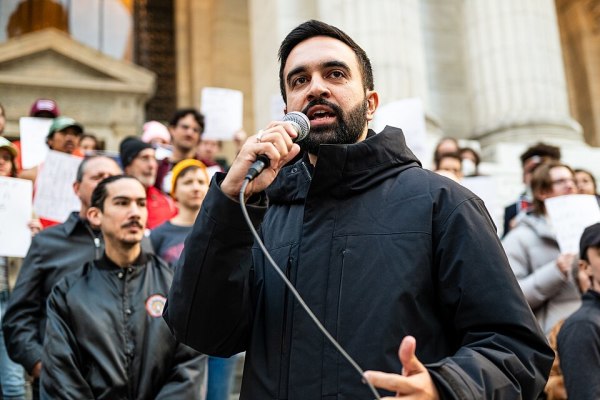Lutheranism Looking Less Lutheran in the West
Traditional Lutheran congregations are looking a little different these days. With mainline churches either losing people in the pews or fearing such a loss, more have chosen to implement evangelical approaches to their less popular traditional ways.
At Zion Lutheran Church in California's Silicon Valley, the congregation was installing their new associate pastor. A rock-n-roll band was set up on the front lawn of the church and clergy wearing brightly colored Hawaiian shirts sat down in front. After sermons were delivered and the service ended, the luau began.
The church was "not really Lutheran at all except that it took place on the front lawn of a Lutheran church," wrote Stephen Ellingson, author of The Megachurch and The Mainline.
Ellingson, assistant professor of sociology at Hamilton College in Clinton, N.Y., studied nine Lutheran congregations in the San Francisco Bay Area which has more residents who report having no religious affiliation and fewer Christians than the Orange County and Los Angeles Counties of Southern California. With Lutheranism looking relatively weak in terms of membership on the West Coast, the sociologist was charged with a grant to explain how and why some congregations were able to flourish amid a long-standing loss of membership in the state.
"I go to these churches and I go to worship services, and I start talking to clergy and insiders – people who've been around in the Bay Area – who knew the history of Lutheranism in California. And one of the things that hit me over the head from the very beginning was no one really cared about being Lutheran," Ellingson explained to The Christian Post. "No one seemed very knowledgeable about the tradition. No one seemed to care much about it."
While some churches were intentional about Lutheran tradition, by and large, it seemed like "who cares?" said Ellingson.
People are not committed to their denomination, the author observed after studying the nine Lutheran churches. Although some surveys have suggested that Lutherans do care about tradition, as Ellingson noted, a recent survey by LifeWay Research revealed lack of loyalty to a denomination. Among people who switched churches, 54 percent changed denominations when moving to a new church and 44 percent consider denomination as an important factor in selecting a church.
"Tradition, writ large, is dead. Being a uniquely, a particular type of Christian - a Lutheran Christian, a Presbyterian Christian, an Episcopalian Christian - doesn't matter anymore (people in their 20s, 30s and teens)," said Ellingson. "So people just want to be Christian."
Particularly in the West, congregations are less interested in following or reproducing doctrine, theology, and ethics emanating from denominational centers and more interested in creating church life to fit the local context, wrote Ellingson. He noted some historians argue that geographic distance from the national religious centers and pervasive individualism and pragmatism in the West have produced such congregations.
Retired clergy in the Bay Area have suggested to Ellingson that Lutheran congregations in California either hold on to the tradition so tightly that they become life-long Lutherans and irrelevant to everyone, or they adopt the traditions of other Christian groups and in the process lose the strongest parts of their Lutheran heritage.
Not all churches are on the decline in membership, but those that have stable numbers are afraid that they are going to die, said Ellingson. As the members in such churches age, they fear they won't get replaced, he explained.
"We have to change or die" served as a mantra for most of the congregations Ellingson studied.
For churches that choose to change, many are adding elements of evangelicalism.
"Anecdotally, one of the things I heard and witnessed a lot was just how important the megachurches are for all sorts of clergy especially," said Ellingson.
Some clergy and lay leaders, not just within the Lutheran denomination, connect with different church professional groups such as the Willow Creek Association for resources and help in understanding the different practices that have led to the success and growth of megachurches.
One surprising finding, Ellingson pointed out, is that the synod – the local administrative region of Lutheranism – would bring in people who weren't Lutheran to talk with Lutheran ministers about the problems facing Lutheran and mainline churches.
The book suggests that "the old boundaries that kept evangelicalism and mainline Protestantism in separate religious worlds are breaking down as churches within the old mainline adopt the worship practices, theological language, and identities of evangelicalism and nondenominationalism," wrote Ellingson. "It appears that evangelicalism and nondenominationalism are colonizing mainline Protestantism."
Overall, mainline churches realize they have got to do stuff differently, said the sociologist – whether it means "really being Lutheran" and embodying the best of tradition or embracing evangelical practices.
There isn't one solution, Ellingson said, and the Lutherans haven't figured out the best way to go yet. Right now, it's a period of trial and error and "whenever it ends, Lutheranism will look differently than it does today."
Traditionalists won the 19th century fight regarding these issues, noted Ellingson, but he's not convinced the traditionalists will win this fight.
The Megachurch and The Mainline was released on May 1 and was written as an academic book for sociologists from a sociologist point of view, Ellingson clarified.





















